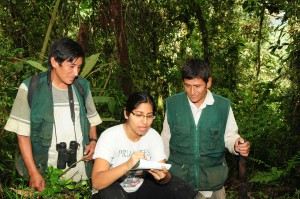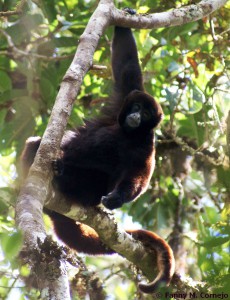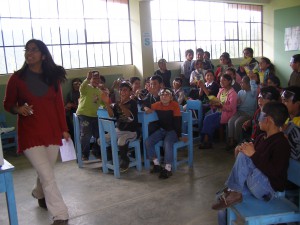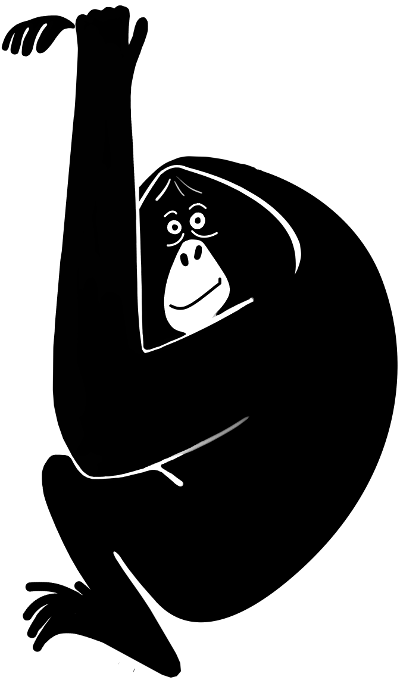Listen to an exclusive Voices from the Field interview with Fanny M. Cornejo, PEN's former Regional Coordinator for Peru, Bolivia, and Ecuador below.
Can you please tell our listeners your name, title, and affiliation?
My name is Fanny Cornejo and I am the [former] Regional Coordinator for Peru, Bolivia, and Ecuador. I also co-manage an educational project in Peru with the NGO Yunkawasi.

I am a biologist, so back in 2005 when I started doing my research work in Peruvian Amazonia as an intern for various projects (most of them related to hunting sustainability of primates and other big mammals), I became aware that local people, not indigenous people, but recent colonizers that are living in the middle of the forest, had no awareness of the diversity and importance of the primates surrounding them. That really impacted me because these are areas of the world where you have ten or more species of primates living in the same place. You would ask local people and they would know the name of a couple of species, but they wouldn’t be really aware of what is going on.
After these experiences, the idea of working on primate education started growing in my head. A couple of years afterwards when I was carrying out my research in a different type of environment in the montane forests of Peru, I started getting frustrated again because local people did not even know they had an endemic and critically endangered primate living in their backyards. Because of these two experiences, I finally decided that we had to do something. That is how I ended up teaming up with Fanny Fernandez and Yunkawasi. In 2008, we put together a primate education program using the endemic and critically endangered yellow-tailed woolly monkey as a flagship species.
Can you share a personal story to support how education influences or results in primate conservation?
Well, there are many stories. Right now, I am thinking of my field site, which is Corosha in the Tropical Andes of Peru. When I first started working in this area, the knowledge of local people about primates was very limited, even though they had a unique and critically endangered species living there. When we started working on our educational program there, with the high school, elementary school, and the adults of the area, we realized that people were proud to have a species that was unique to the area and that this species was bringing so much attention to this part of the world. It was very interesting because we were able to witness this change of mind and how people started to think about the importance of the species in a wider context, understand what it really meant to protect the species and its habitat, and the importance of the species to the ecosystem.

Can you describe one challenge you encountered and overcame as a primate educator?
Working with people and education in rural areas is quite a challenge on its own, but the challenge that comes to my mind is actually funding. Even though primate education is very important and it can change people’s perspectives and attitudes, it is something that is very difficult to measure. It is very difficult to measure your success in tangible ways, so for funders who usually like numbers and want proof of how the project is succeeding, it is very difficult to explain to them that this is a process.

Throughout the years, because of the great help of all these people we had at the beginning, we were able to get bigger sources of funding – mainly for the educational part of our work. Things are now better. I really acknowledge that at the beginning to work with an educational program as a project on its own is very challenging and it takes time. You also need to be creative and to find novel ways of getting funding. This is a challenge, but I think it can be overcome. You just need to be very, very creative about it.
Thank you for listening! We welcome and encourage you to leave a comment, share this post, and help us spread the word.







